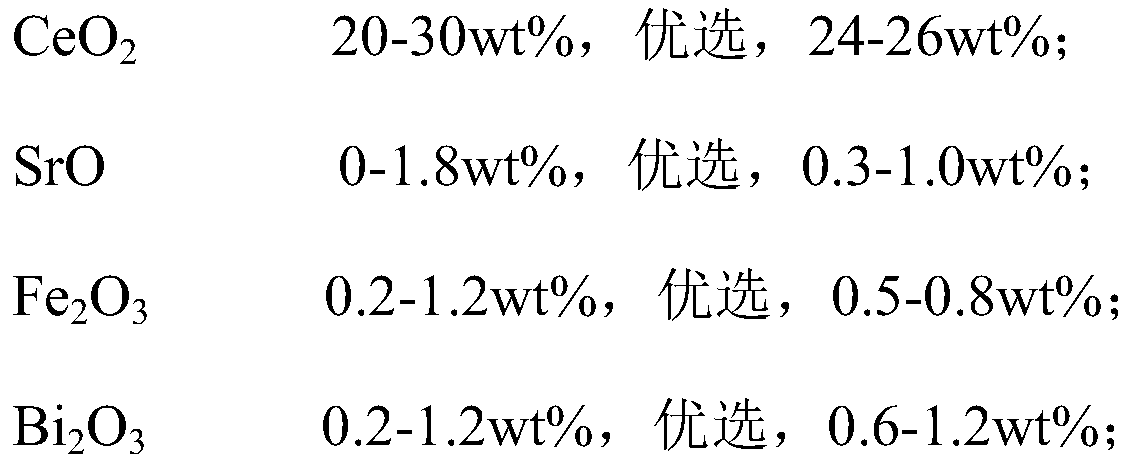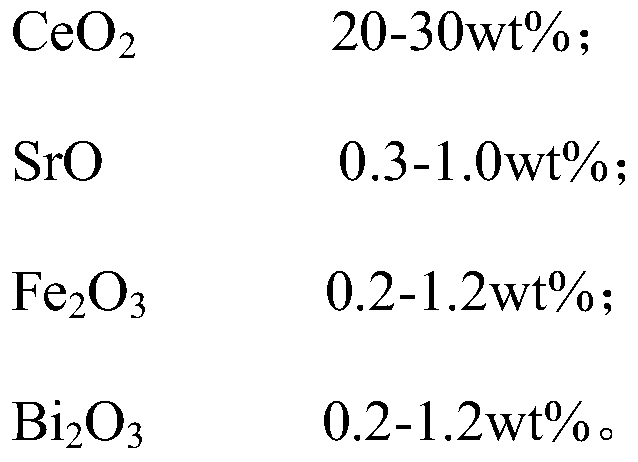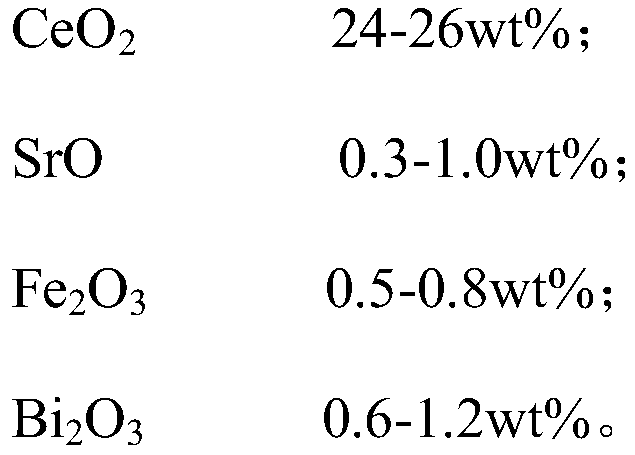A monolithic catalyst, its preparation method, and its use
A monolithic catalyst and catalyst technology, applied in the direction of chemical instruments and methods, physical/chemical process catalysts, heterogeneous catalyst chemical elements, etc., can solve the problems of less catalyst research, difficult separation, solid-liquid separation, etc., and achieve good results Chemical and biological stability, long residence time, and efficiency-enhancing effect
- Summary
- Abstract
- Description
- Claims
- Application Information
AI Technical Summary
Problems solved by technology
Method used
Image
Examples
Embodiment 1
[0057] (1) Cut the honeycomb cordierite into a cylindrical cordierite substrate with a diameter of 30mm and a height of 20mm, soak 16.1g of the substrate in 10wt% nitric acid solution, heat it in a constant temperature water bath at 80°C for 5h, and then wash it with deionized water Wash 4 times, then dry the cordierite in a 70°C drying oven for 4 hours, and finally place the cordierite in a muffle furnace, increase the temperature to 450°C at a rate of 5°C / min, keep the temperature for 5 hours, and then cool down to 80°C Then, it was taken out to obtain 15.5 g of acid-treated cordierite A1 carrier.
[0058] (2) At 20°C, the Ce(NO 3 ) 3 Put 1000 g of the solution into a beaker, place it on a magnetic stirrer, add 27 wt% ammonia water to adjust the pH to 9.0, make it completely precipitate, and filter out the precipitate with a suction filter. Rinse the precipitate several times with deionized water until the pH of the remaining water is 8. Take 100 g of the precipitate and ...
Embodiment 2
[0063] (1) At 25°C, prepare Ce(NO 3 ) 3 and Sr(NO 3 ) 2 Solution 1000g, wherein Ce(NO 3 ) 3 The mass percentage is 4wt%, Sr(NO 3 ) 2 The percentage content of the solution is 0.4wt%, put it into a beaker, place it on a magnetic stirrer, add 28wt% ammonia water to adjust the pH to 10.0, make it completely precipitate, and filter out the precipitate with a suction filter. Rinse the precipitate several times with deionized water until the pH of the remaining water is 6. Take 100 g of the precipitate and put it into a beaker, add 8 wt% dilute nitric acid at 50°C until the pH is 1, and stir for 2 hours to obtain yellow cerium-strontium sol B2, which is left to stand for 24 hours before use.
[0064] (2) At room temperature, impregnate 15.5g of cordierite A1 in 120g of cerium-strontium sol B2 that was evenly stirred, keep it for 4 minutes, blow off the excess liquid in the channel with a suction ear ball, and then place the cordierite in an oven at 95°C Dry for 35 minutes, r...
Embodiment 3
[0068](1) Cut the honeycomb cordierite into a cylindrical cordierite substrate with a diameter of 30mm and a height of 20mm, soak 16.2g of the substrate in 15wt% nitric acid solution, heat it in a constant temperature water bath at 60°C for 3h, and then wash it with deionized water 6 times, then dry the cordierite in a 90°C drying oven for 2 hours, and finally place the cordierite in a muffle furnace, increase the temperature to 500°C at a rate of 3°C / min, keep the temperature for 3 hours, and then cool down to below 80°C It was taken out to obtain 15.4 g of acid-treated cordierite A2 support.
[0069] (2) At room temperature, immerse 15.4g of cordierite A2 in 140g of cerium-strontium sol B2 that is evenly stirred, keep it for 6 minutes, blow off the excess liquid in the channel with a suction ear ball, and then place the cordierite in an oven at 100°C Dry for 30 minutes, repeat this operation 7 times, and finally place the cordierite in a muffle furnace, raise the temperature...
PUM
| Property | Measurement | Unit |
|---|---|---|
| diameter | aaaaa | aaaaa |
| height | aaaaa | aaaaa |
Abstract
Description
Claims
Application Information
 Login to View More
Login to View More - R&D Engineer
- R&D Manager
- IP Professional
- Industry Leading Data Capabilities
- Powerful AI technology
- Patent DNA Extraction
Browse by: Latest US Patents, China's latest patents, Technical Efficacy Thesaurus, Application Domain, Technology Topic, Popular Technical Reports.
© 2024 PatSnap. All rights reserved.Legal|Privacy policy|Modern Slavery Act Transparency Statement|Sitemap|About US| Contact US: help@patsnap.com










